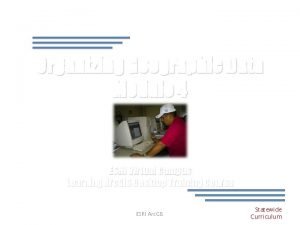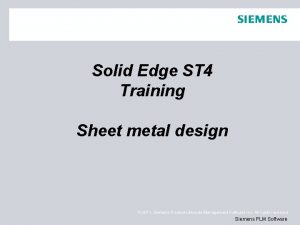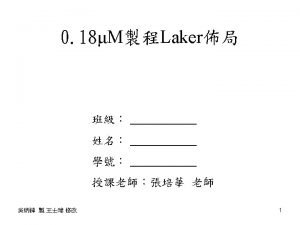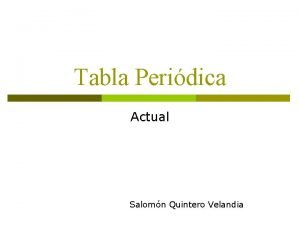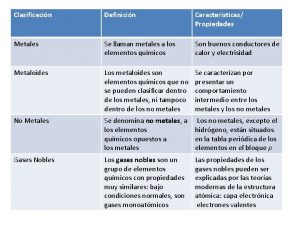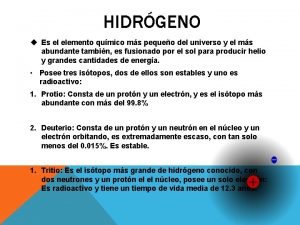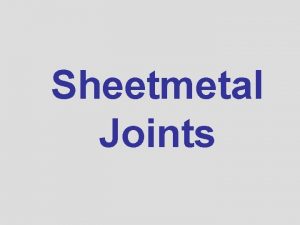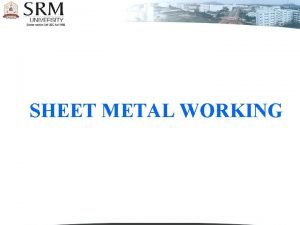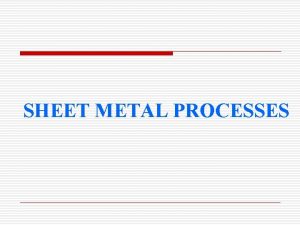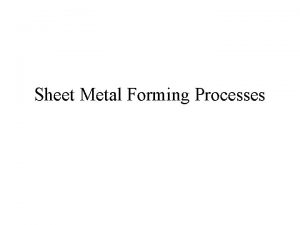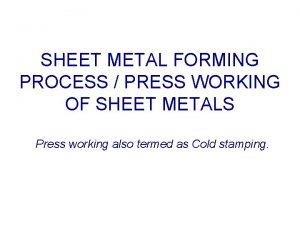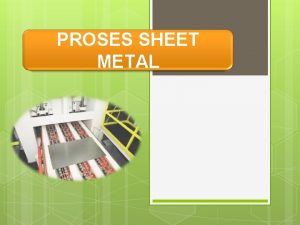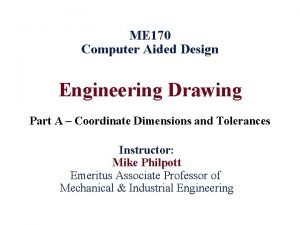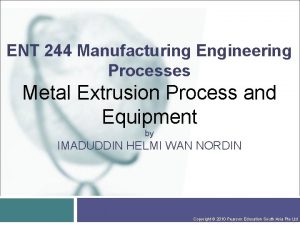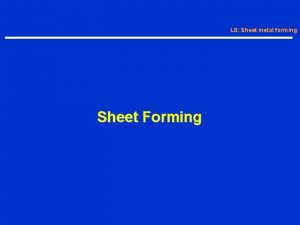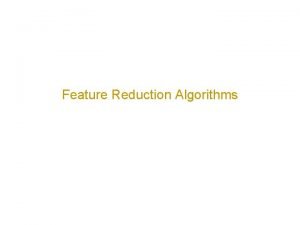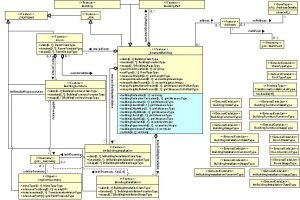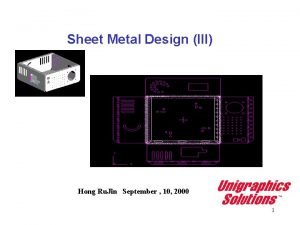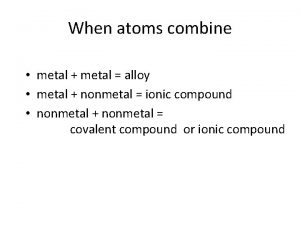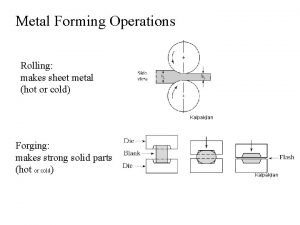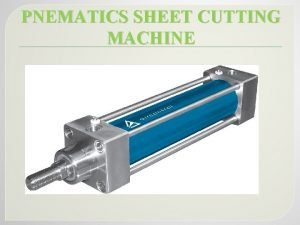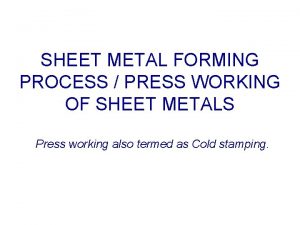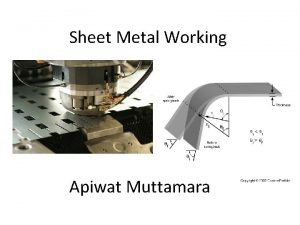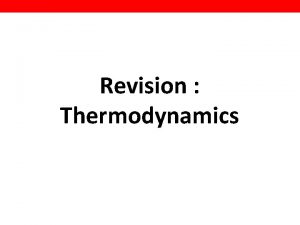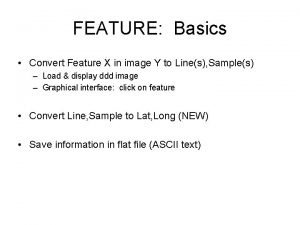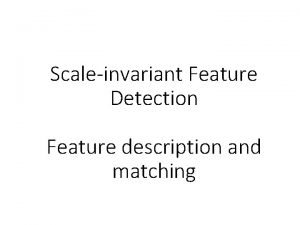Sheet Metal Design I Sheet Metal Feature Hong

























- Slides: 25

Sheet Metal Design ( I ) Sheet Metal Feature Hong Ru. Jin September , 5, 2000 1

Course Objectives: • Create sheet metal parts using both modeling and sheet metal features. • Set up default standards and creation preferences. • Effectively create and edit Flange, Insert Flange, Sheet Metal Bend, General Flange, Sheet Metal Punch, Sheet Metal Hole, Sheet Metal Slot, Sheet Metal Cutout and Sheet Metal Bracket features. Preferences and Standards Create sheet metal standards and preference defaults to ensure design for manufacturability. These standards are called part standards and feature standards, and are contained in a Standards default file (ugs 160ugiiugsmd_def. std) • Part standard parameters include : material type, thickness • Feature standards are used to define the size of the feature, and vary for each sheet metal feature. Such as flange width, bend angle, bend allowance formula, and diameter ( for sheet metal holes. ) 2

SMD General Preferences__ Preferences Sheet Metal. . . Bend Allowance Formula is used when the model is unfoled or when the flat pattern is formed, to calculate the neutral axis development length for the bent portion of the flange. L=(Radius+(Thickness*K))*rad(angle) Where K= f(Radius/Thickness, Material type) 3

Defining Standards Checking Standards Information Check Feature Standards… Check Entire Part Standards. . . 4

Introduction to Sheet Metal Features This course teaches how to use Sheet Metal Features in the Modeling Application. It uses a solids_based, feature_based approach to defining sheet metal parts. From these parts user can create accurate manufacturing data such as flat pattern definitions, forming tables, and bend sequence tables for down-stream applications. Insert Straight Break Flanges - Creating and positioning Flange features. Also included is the Form / Unform Sheet Metal option. Inset Flanges - Creating and positioning Inset Flanges. Sheet Metal Bend_ Creating a bend by specifying a line across any planar face. 5

Generalized Flanges - Creating single and multiple step general flanges Sheet Metal Bridges - Creating sheet metal bridge features. Beads - Creating various bead features. Sheet Metal Punches - Creating sheet metal punch features. Sheet Metal Holes - Creating and positioning Sheet Metal Hole features. Sheet Metal Slots - Creating and positioning Sheet Metal Slot features. Sheet Metal Cutouts - Creating sheet metal cutout features. Sheet Metal Bracket Sheet Metal Relief Sheet Metal Strain Form/Unform 6

Sheet Metal features Straight Break Flanges • Bend Allowance Formula K=f(t/r, Material) 7

• Thickness and Width • Length and Angle and Radius 8

Note: The maximum angular value is limited by the self-intersection of the flange bend segment with the attachment body. • Left and Right side: Taper Rmax=f(r, t) 9

• Left and Right side: Miter Simple, Miter Full Miter Simple Mitered Flange with a Relief Miters Non_linear taper can be added to the flange bend face to provide a mitered corner in the formed state of the flange. Right side mitered values can be different than left side value. • Miter Simple -To create a mitered corner where only the inside bend edge of the flange meet . You can also specify a miter relief radius with simple miters. • The Miter Angle defines the angle of the mitered corner in the formed state of the flange as viewed from a plane normal to the attachment face. This angle is typically half of the desired corner angle. • Positive values will miter the flange inward along the length of the flange. • Negative values will miter the flange outward along the length of the flange. 10

Note: If you are applying Simple miter to adjacent flange of a part, a miter relief radius must be specified on at least one of the mating flange to prevent a non-manifold. • Miter Full - A fully closed mitered corner between two flanges in the formed state, where the outside and inside faces of the bends of each flange actually meet each other. Miter Full The Miter Phase is usually employed when you are creating additional flanges on existing flanges. The value of a miter phase is equivalent to the sum of the bend angle of the base flange. 11

• Left and Right side: Butt-joint Adds an extension to the side or sides of a flange so the web portion of the flanges “butt” up against each other. • Width: Use Expression • PRO Method: Manual 12

• Form/Unform Application Sheet Metal deign Tools Flat Pattern 13

Flange Instancing _ Using Insert Feature Operation Instance Flanges are currently the only Sheet metal Feature that can be instanced. Sheet metal features such as SM_Hole and SM_Slot etc. . Can be added to the master flange before or after instancing has occurred. However, in neither case will the added feature be reflected in the resultant flange instances. Master Flange SM_Hole SM_Slot After instancing Flange 14

Flange Construction Tips: • Due to the positionally dynamic nature of flange features, it is important to sufficiently position flange by constraining at least two edges of the flange. Insufficiently constrained flanges can fail to position properly if their base attachment feature change. • Note that after being unformed, the bend area of a flange is no longer cylindrical but is planar. Therefore, datum axes should not be created through the axis of a flange’s cylindrical bend area in formed state. • The only of features which may be placed on the cylindrical bend area of a flange are Sheet Metal Punch, Sheet Metal Hole, Sheet Metal Slot, or Sheet Metal Cutout. • When using instance set on flange features, it is important to fully constrain the feature placement using positioning dimensions. It is a good practice to unform the flange after creating the instance to test its integrity. • A dependency is created between adjacent flanges if the Thickness parameter is set to Infer From Edge for each flange. To break this associativity, you must change the Thickness parameter to Use Expression. 15

Inset Flange Features Inset Flange is a straight break flange that is created and positioned inset from an edge of a planar face. • Inset 16

• Left and right: Relief 17

Sheet Metal Bend To create and edit formable bend geometry from existing flat pattern. 18

General Flange Features General Flange is a flange that is created and positioned from an edge of any face. The face does not have to be planar. The general flange can be: • built in a parameters mode with up to 12 bends • built to sections, where the flange is built from a set of curves that define the cross sections of the flange • built to faces, where the flange matches a set of input faces • built to a punch vector, where the flange bend angle is defined such that the cross section curves are parallel to a given vector. • Mode _Let you specify how the general flange should be constructed. Four modes are available. Each mode requires different input data. Note: All general flanges are tangent to the faces along the bend edges. 19

• Parameters_ mode requires you to specify a bend edge, and optional spine. Law Control 20

• Punch Vector mode is requires that you specify a bend edge, optional spine, and punch direction vector. (The spine must be in a plane that is normal to the punch vector. ) This mode is useful if the bend angle is a function of the punch vector, as when creating a flanged hole. ( the first bend angle is determined from a user_specified vector. ) Example: Punch Vector: Zc 21

• Build to Sections mode requires you to define the bend edges, spine (optional), and desired section curves or edges. ( The section strings must be created with Modeling tools. ) Section string • Build to Faces After selecting the bend edge(s) and optional spine, you need to select faces that are G 1 continuous and are G 1 continuous with the bend edge. All of the faces must be from the same body. (They must not be from the body of the target faces. ) This mode is useful if you already have geometry that looks like a flange, that you want to behave like a flange. 22

• Options: Infer Thickness can be toggled off, if you need to specify a different thickness. Infer Spine can be toggled off, if you do not want to infer a spine. r Value and Area Preserve affect the average strain ratio to normal anisotropy. You can specify an r Value or toggle Area Preserve ON, which is equivalent to specifying an infinite r value. Distortion can be controlled Along Sections or with a Bi -Directional control. Along Section _A distortion is constrained to be along section normal to the governing spine. Bi-Directional_Allow the flange to distort on all three outer edges as it is unformed Tolerance - value used by the system to construct the general flange during the approximation process. The default value is the distance tolerance modeling preference. 23

Sheet Metal Bridge Features Sheet Metal Bridge is like a general flange, except that it can be created and positioned between a base body and a target body. One use for the bridge feature is in die engineering. The general flange and bridge features can be used in together to design addenda and binders. Base Bridge Feature Target • Confirm Upon Apply : On 24

• Construction Type • Thickness • Inside radius • Construction Method 25
 Feature dataset vs feature class
Feature dataset vs feature class Isolated feature combined feature effects
Isolated feature combined feature effects Sheet metal gusset design
Sheet metal gusset design Hkdi zone 24
Hkdi zone 24 Solid liquid and gas venn diagram
Solid liquid and gas venn diagram Metal and non metal
Metal and non metal Periodic trends acidity
Periodic trends acidity Melting point of diamond
Melting point of diamond 0 25
0 25 Uses for non metals
Uses for non metals Pure substances on the periodic table
Pure substances on the periodic table Ionic compounds have
Ionic compounds have Periodo en quimica
Periodo en quimica Blanch def
Blanch def Clasificación de los metales y no metales
Clasificación de los metales y no metales Example of metal elements
Example of metal elements El sodio es metal o no metal
El sodio es metal o no metal Sheet metal joints and seams
Sheet metal joints and seams Introduction of sheet metal
Introduction of sheet metal Superplastic forming
Superplastic forming Area of sheet metal
Area of sheet metal Lancing operation in sheet metal
Lancing operation in sheet metal Jml sheet metal
Jml sheet metal A very large industry that uses pattern development
A very large industry that uses pattern development Engineering drawing symbols
Engineering drawing symbols Types of extrusion
Types of extrusion
